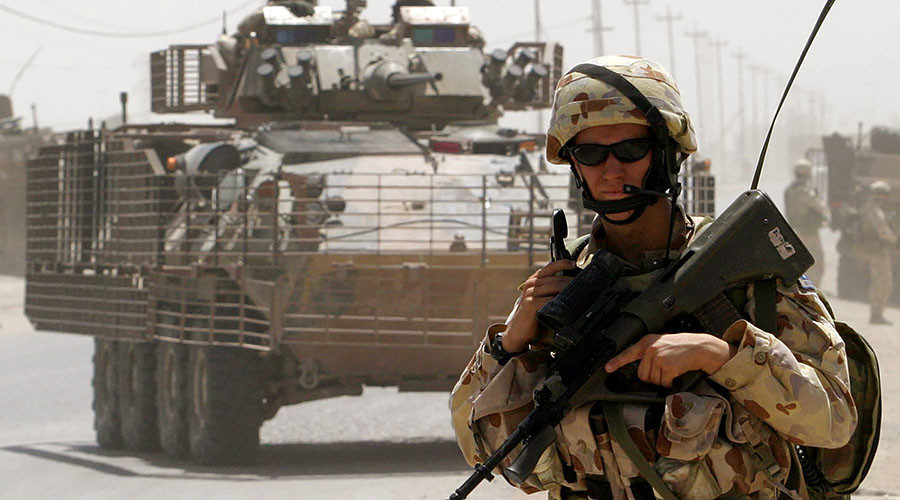
© Momammed Ameen / ReutersFILE PHOTO: An Australian soldier in Iraqi town of Samawa
.
A report, written by Dr. Albert Palazzo of the Australian Army's Directorate of Army Research and Analysis (DARA) between 2008 and 2011, was accessed by Fairfax Media and
cited by the
Sydney Morning Herald. DARA is a branch of the Australian Army Headquarters and serves as the Army's think tank
The 572-page declassified document provides enough evidence to prove that then Prime Minister John Howard joined former US President George W. Bush in invading Iraq only to strengthen Canberra's ties with Washington.
It also gives insight into how the political decision to enter the unpopular war was made - Howard's statements about
enforcing UN resolutions, combatting global terrorism, and contributing to the post-war reconstruction of Iraq were dismissed in Palazzo's report as "mandatory rhetoric."Eventually, Prime Minister Howard and the then Chief of the Australian Defense Force (ADF) General Peter Cosgrove were unwilling to accept the prospect of high casualties among the soldiers deployed to Iraq.
"The government was uncomfortable with the prospect of losses due to the possible negative effect on the domestic political environment," the report said.
Australia, nonetheless, deployed a very limited number of troops and assets, which were often incapable of carrying out any noteworthy combat action. However, sending a sustainable and combat-capable contingent was "secondary to the vital requirement of it just being there." Ultimately, such policy made some US military officers ridicule the Australian commitment, calling it "a series of headquarters."
The US wanted the Australians to provide a reconnaissance battle group consisting of light armored vehicles. Lieutenant-General Peter Leahy, who was then chief of Australian army, actually pushed for them to be sent to action at the time, but "Cosgrove pushed back," finding the "manpower requirement too large." Consequently, the only significant Australian force on the ground in Iraq was the SASR, Australia's equivalent of the famous British Special Air Service, because the Army was not prepared to fight against "even a mildly competent opponent," Palazzo wrote.
However, even the deployment of SASR got off track, the report stated.
ADF dispatched several CH-47 Chinook helicopters to transport the special forces, but the pilots lacked experience and simply "could not conduct aerial refueling or night insertion tasks," which were essential for the Iraq mission. Moreover, the aircraft had no electronic warfare equipment for evading Iraqi missiles.
The SASR were deployed in Iraq by US helicopters, the paper said, adding "it is not possible to explain the rationale behind the CH-47s allocation" to the war.
In addition, the mission became even messier when some troops arrived without weapons. Hot meals were not available at this point either, so the Australian troops had to live on US combat rations during the four-month deployment, leading to an average weight loss of six kilograms per soldier.
The lack of a clear mission was one of the factors negatively affecting troop morale. "Numerous rotation commanders... were convinced of the failure of the organization to inform them of what they were supposed to achieve in Iraq," the report said.
It was "enormously frustrating," an Australian commander wrote. Another called the mission "flag waving" and feared the coalition allies would conclude that the ADF was a "pack of posers." Another was angered when the Middle East commander accused him of "mission creep" - though no mission had been defined in the first place.
In a telling statement to Palazzo, one of the officers said that the "unstated policy of Operation Catalyst [was] that 'no mission was worth dying for.'"
Australia's military contribution was relatively small in proportional terms, around 2,000 personnel in total, or 2.42 percent of its military compared to the US' 4.85 percent and the UK's 12 percent. Aside from the special forces, Australia deployed two frigates, as well as refueling and combat aircraft.
Australia's Defense Ministry has dismissed Palazzo's report as "unofficial history," which only represents the authors own opinion.
Reader Comments
to our Newsletter